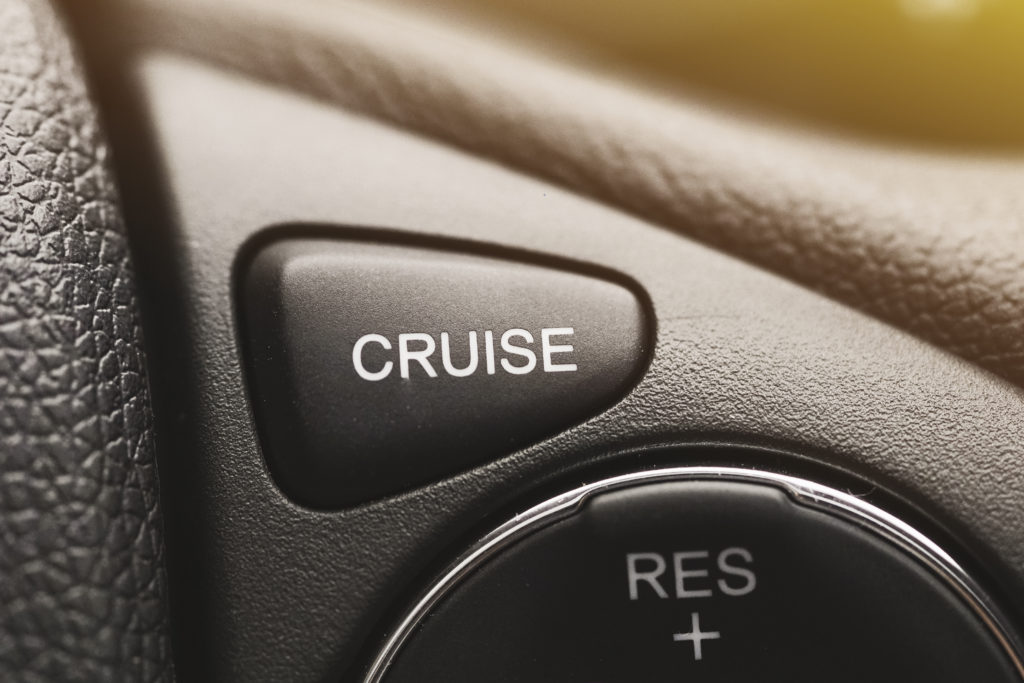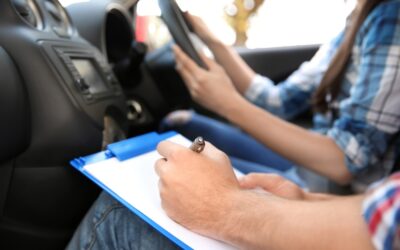Some cars feature cruise control. With this system, you can establish a set speed for your car to maintain. Most drivers set their cruise control to 70mph, to allow for smooth and comfortable cruising on motorways whilst ensuring they don’t break the speed limit.

How to Use Cruise Control
If your car has cruise control, there might be buttons or switches on or around the steering wheel for controlling it. These buttons will allow you to activate cruise control and to raise or lower the desired cruising speed.
If you activate cruise control, your car will maintain your desired speed until you disengage cruise control. And if your car has adaptive cruise control, there’s no need to brake, accelerate or change gears. All you have to worry about is concentrating on steering and monitoring the road.
So how do you disengage cruise control? Some systems automatically disengage it when you press the brake or the clutch. Others require you to disengage it manually, using the buttons on your steering wheel.
For more information, check your car’s user manual. It will tell you where to find all the controls in your car, and how to use them.
How Does Cruise Control Work?
A sensor monitors the road and your engine, automatically adjusting the engine’s throttle position to maintain your desired speed. Some cars feature Adaptive Cruise Control (ACC). As well as keeping your speed constant, the ACC system uses radar waves to ensure you always maintain a safe distance from the car in front.
So if they slow down, you’ll slow down too. But if they speed up, so will you – but only until you hit your predefined cruise control speed. However, it is essential that you do not rely on ACC to slow your car down. Always stay vigilant and in full control of your car at all times using the brake to slow the car down and maintain the correct stopping distance between yourself and other motorists.
Do I Need Cruise Control?
While cruise control can be an incredibly useful feature, it’s not for all drivers.
Let’s take a look at some of the pros and cons.
The Benefits of Cruise Control
If you routinely travel long distances on the motorway, cruise control can make driving considerably easier. There’s no need to put a strain on your leg while constantly pressing the accelerator down. Instead, you can reach your desired speed and then set your cruise control. It also helps reduce the chances of accidentally creeping over the speed limit.
Cruise control can also help reduce fuel consumption. Maintaining a constant speed uses less fuel than constantly speeding up and slowing down.
The Downsides of Cruise Control
Cruise control is no use at all in some settings, such as cities, suburbs, and the countryside. If you do most of your driving in congested city streets, down narrow country lanes, or through areas with restricted speed limits and lots of hazards, then you’ll probably never have an opportunity to use your cruise control system. So you may not need a car with cruise control.
Also, whilst some people may find it more stressful to continuously monitor your speed on a motorway, and it might be a strain to continuously hold that accelerator pedal down, but these two things will at least keep your mind engaged.
With cruise control some drivers might let their minds wander when on the motorway. They might not spot a hazard until it’s too late to react. Without cruise control some drivers will be able to react instantly.
When not to use cruise control
If you’re tired and driving at night, using cruise control may not be a very sensible option. If you aren’t 100% focused on driving you may drift off which could lead to an accident.
Finally, cruise control can increase your chances of slipping if you’re driving on ice, snow, or rain. There are some circumstances when it’s vital that you retain complete control of your car at all times. Read our guide on how to tell if you’re driving on ice and what to do. And don’t forget to ensure you have the right car insurance in place.




